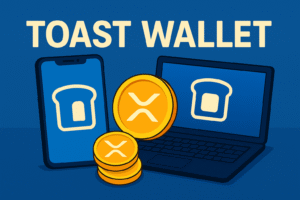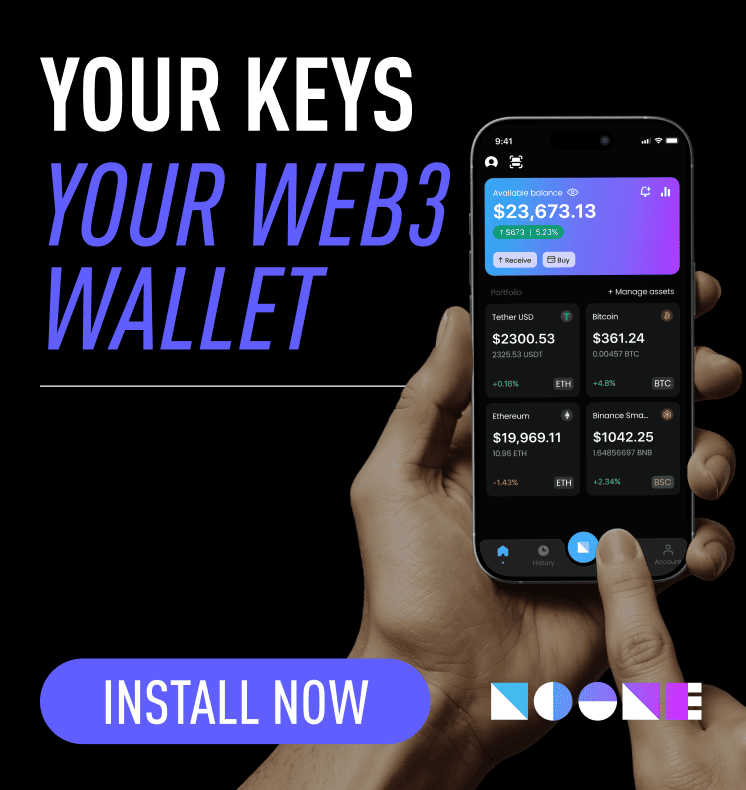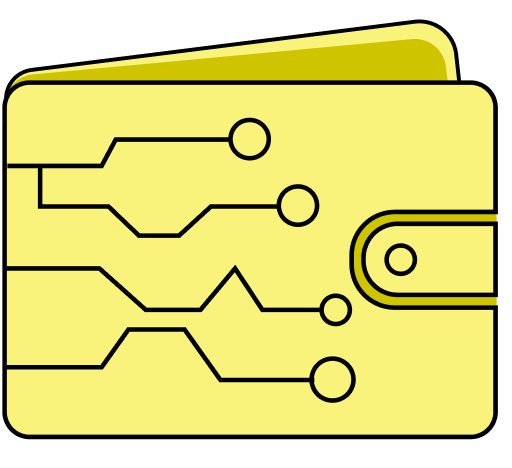Introduction
Toast Wallet is an open-source, free desktop and mobile wallet for the native XRP coin of the Ripple network. It is simple to store, send, and receive XRP with no fees over and above the network standard charge. Wouldn’t you love having a wallet that’s as straightforward as sending a text? Toast Wallet attempts to be just that with a minimal interface and good security. Below, we will look at how Toast Wallet functions, its history, and why it is of particular interest to the XRP community.

Simple interface for sending and receiving XRP via Toast Wallet.
Overview of Toast Wallet
Toast Wallet started as a community-backed initiative to provide an easy-to-use alternative to complicated cryptocurrency purses. You don’t have to install the whole XRP Ledger in order to use it—Toast Wallet uses public servers to retrieve your balance and history. The light-client design conserves storage space and accelerates startup.
Anyone is free to install Toast Wallet on iOS, Android, Windows, macOS, or Linux, which is a genuinely cross-platform application. The wallet keeps your secret key with you, so your funds are only controlled by you. It also offers basic functionality you would want—creating new receiving addresses, restoring from your recovery phrase, and seeing your previous transactions.
Since it is open-source, developers and security professionals can examine the code, recommend improvements, and propose patches. You receive the advantage of community review, which ensures bugs or vulnerabilities are discovered and eliminated prior to them having an impact on users. Transparency fosters trust, a must for any wallet involving actual money.
Core Features and Design
Simple Interface
At its core, Toast Wallet is all about simplicity. When you open the application, you are immediately shown a clean UI with your balance and most recent activity displayed. Sending a payment is a simple matter of tapping the button labeled “Send,” inputting an address, and approving the amount.
Security Tools
The security aspects include a 12-word recovery phrase and encrypted local storage. If you lose your device, the phrase helps you recover your wallet on any supported platform. Toast Wallet also uses a PIN or biometric lock via fingerprint or face identification on mobile.
Transaction Fee Control
Toast Wallet includes options for you to customize the fees for transactions. Although the fees for the XRP Ledger are by default low, you can also pay a marginally increased fee when you want your transaction to confirm sooner. The slight amount of control can be lifesaving during periods of network congestion when seconds count.
Technology and Security
How does Toast Wallet communicate with the XRP Ledger without running a complete node? It connects to publicly available rippled servers that communicate the XRPL’s API. It’s much like visiting a shared library rather than purchasing each book directly—you only borrow what you need. It preserves your device’s resources without hindering your access to the ledger information.
Your private key—your proof of ownership of your XRP—never exits your device. Toast Wallet protects it with industrial-grade cryptography. And that is to say, even if your phone is stolen, the thief can’t access your money without your PIN or your seed phrase.
The developers monitor the upstream libraries such as ripple-lib, which Toast Wallet uses to create and sign transactions. When there are vulnerabilities within the dependencies, the community is able to quickly push the updates. You reap the benefits of this system of checks and balances without so much as lifting a finger.
History and Development
Toast Wallet was launched late in 2017 as a community-driven initiative by Ripple enthusiasts. The majority of XRP wallets then demanded syncing up with the entire blockchain or the payment for hosted solutions. There was no light, free wallet yet, and Toast Wallet filled this space.
Contributors have included desktop support, enhanced the user interface, and resolved bugs throughout the years. Large releases tend to occur as a response to a change in the XRP Ledger protocol or the ripple-lib API. Each update demonstrates the way an open project is able to evolve with the changing network.
Despite not sponsoring Toast Wallet directly, the company and partners have noted the wallet’s popularity. The acknowledgment led to developers becoming even more attracted to contribute to the wallet so that it can be compatible with updated XRP features as well as the latest security standards.
Community and Ecosystem
One of the reasons Toast Wallet is still popular is because of its open community on GitHub and Reddit. Users ask for support questions, show screenshots, and list issues. You can follow feature requests or bug fixes in real-time—no mysterious corporate ticket system obscures progress.
Third-party services also integrate with Toast Wallet by providing donation or payout addresses formatted for it. Direct deposits are accepted by fundraising campaigns, tip bots, and a few small exchanges. The interoperability demonstrates how an otherwise simple tool can be a component of a broader financial system.
Educational material, ranging from YouTube instructional videos to posts, lead new users through the process of setting up and best practices. The educational material frequently mentions Toast Wallet by name, which enables new users to gain trust with it as a bridge to the world of XRP. With time, this trust solidifies it in the ecosystem.
Supported Platforms and Integration
Toast Wallet excels at supporting prominent operating systems with native applications. For use on the phone, both iPhone and Android are supported, leveraging each platform’s native security. For desktop, Windows, macOS, and Linux versions are powered by Electron so that developers only need one codebase.
You will also find CLI forks and Toast Wallet-compatible browser extensions for power users. Community-built tools such as these allow you to automate payments or integrate wallet functionality into bespoke applications. If you have a small server, you can even have it send alerts or automatically send XRP transfers.
Integration with hardware wallets continues to be a feature requested. Pure-software wallets such as Toast Wallet are suitable for small balances, yet hardware would increase the assurance for larger holdings. Community debate surrounding the subject suggests directions to move in, yet the project continues to be centered on simplicity for the moment.
User Experience and Interface
An easy-to-use interface prevents you from making simple errors such as sending your XRP to the wrong address. The input fields unmistakably identify your “Destination” and your “Amount,” and you can even scan QR codes so you do not make a typo. It’s like having a safety net integrated for your transactions.
The app also offers live alerts when incoming payments are received. You can get push notifications via desktop or a mobile device to be synchronized with your balance. For remittances arriving or for traders who are active, the feature transforms your wallet into a live panel.
Customization is reasonable and practical—you can toggle light and dark schemes, allow advanced fee sliders, or see details about transactions. The options are suitable for casual users and power users who desire a little more control without an overload of complexity.
Conclusion
Toast Wallet enables a straightforward, secure way to access the XRP Ledger from multiple devices. With its light-client technology, you have instant access without compromising on security or transparency. The open-source architecture and engaged community ensure that bugs are resolved and new functionality comes as the network matures.
Whether you’re a newcomer with a minimal balance or a veteran with multiple addresses, Toast Wallet provides a streamlined experience that protects your XRP and is easy to transfer.














 Twitter
Twitter
 Telegram
Telegram
